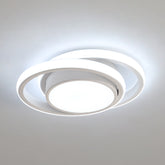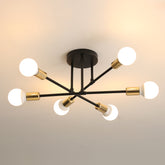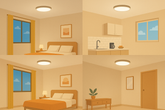LED vs Traditional Lighting: A Comparison of Performance, Lifespan, and Environmental Impact
Lighting plays a central role in modern households, not just for functionality but also in creating ambiance. Today, LED lighting has largely replaced traditional incandescent and fluorescent bulbs. LEDs are recognized for their energy efficiency, long lifespan, and environmental friendliness. In this article, we compare the performance, lifespan, and environmental impact of LED lighting versus traditional lighting to help you make an informed decision.
1. Performance Comparison: Brightness and Light Quality
The main difference between LED and traditional lighting lies in how they produce light and the efficiency of that light.
- Brightness: LED lights provide higher brightness with lower energy consumption. For example, a 10W LED bulb can provide the same amount of light as a 60W incandescent bulb, leading to significant energy savings.
- Light Quality: LEDs come in a wide range of color temperatures, from warm light to cool light, which allows for flexible lighting for various needs. In comparison, traditional bulbs offer a more limited selection of light qualities.
- Response Time: LEDs are instant-on light sources, whereas fluorescent bulbs may take some time to reach full brightness and may struggle to start in cold environments.
2. Lifespan Comparison: Impressive Durability of LEDs
Lifespan is another area where LEDs outperform traditional lighting options.
- LEDs: LED bulbs have an average lifespan of 20,000 to 50,000 hours, which is 20 to 50 times longer than incandescent bulbs. They also don't have filaments, making them much more resistant to shocks and vibrations.
- Traditional Bulbs: Incandescent bulbs typically last about 1,000 to 2,000 hours, while fluorescent bulbs last between 7,000 and 15,000 hours.
3. Environmental Impact: Less Environmental Footprint with LEDs
LED lighting is not only longer-lasting but also more environmentally friendly compared to traditional lighting options.
- Energy Efficiency: LEDs consume up to 80% less energy than incandescent bulbs and about 30% less than fluorescent lights. This leads to a reduction in CO2 emissions and significant energy savings.
- Materials and Recycling: Unlike fluorescent bulbs, LEDs contain no harmful materials like mercury, making them safer and easier to recycle. Traditional fluorescent bulbs contain mercury, a toxic heavy metal that must be handled and disposed of with care.
- Heat Emission: LEDs produce much less heat compared to incandescent bulbs, which emit a significant amount of heat. This helps keep ambient temperatures lower and reduces the need for air conditioning.
4. Cost Comparison: Initial Price vs. Long-Term Savings
While LED lights are more expensive upfront, they provide substantial savings over time.
- Initial Purchase Cost: The cost of LED bulbs is higher than that of incandescent and fluorescent bulbs. However, this initial investment is quickly recouped due to their long lifespan and low energy consumption.
- Long-Term Savings: Due to their high energy efficiency and long lifespan, LEDs result in significant savings on electricity bills. It is estimated that using LED lighting can reduce electricity costs by up to 75%.
Conclusion
LED lighting offers significant advantages in terms of performance, lifespan, and environmental impact compared to traditional bulbs. While they may cost more initially, their impressive energy efficiency and long lifespan make them a better choice for eco-conscious and cost-effective consumers. If you want to reduce your energy costs and improve your carbon footprint, LEDs are the best choice for lighting your home or office.














